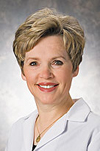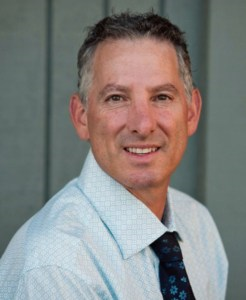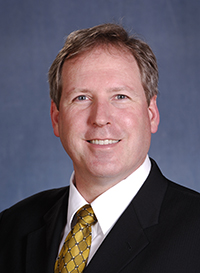Rosacea - Health Tips
Get practical tips regarding Rosacea to help you prepare for your appointments and manage your care from home.

These rosacea skin care tips from dermatologist Dr. Todd Minars called “Face Savers” are aimed at controlling rosacea outbreaks and reducing their severity.
They include the following:
- Clean your face gently no more than twice a day with Cetaphil cleanser or the medicated cleanser.
- Avoid hot showers, baths or saunas.
- Stay cool on hot or humid days (air conditioning and sip ice water).
- Avoid the sun.
- Switch from blades to an electric razor.
- Find substitutes for hot spices such as pepper, cayenne and paprika. Instead of chili powder, try a 2-to-1 blend of cumin and oregano.
- Try taking an antihistamine (e.g. Benadryl or Claritin) two hours before eating cheese, vinegar, processed beef or pork, or canned fish. It may also help to take an aspirin before meals high in niacin (meat, eggs, dairy)
- Minimize stress with proper sleep, deep breathing exercises, visualization, stretching, or yoga.
- Use transparent makeup with a green tint to help hide redness.
- Ask (your doctor’s) aesthetician about skin care products that will not aggravate your condition.

Rosacea is an inflammation of the middle of the face that causes symptoms similar to acne. There are pimples, pustules, and cysts, but there are no blackheads or whiteheads. “This is what differentiates rosacea from acne”, according to Cleveland area dermatologist Dr. Helen Torok.
While there are many prescription rosacea medications used to control rosacea, there is no known cure.
Prescription medications used by Dr. Torok and her colleagues at Trillium Creek Ohio Dermatology include topical and oral formulations. Oral antibiotics include Oracea, Doryx, and Solodyn. A common topical treatment for acne rosacea is Metrogel, but sulfur-based products may also be prescribed used. The medical professional at Trillium Creek also offers a new treatment to eliminate the appearance of facial veins (telangiectasias). This new treatment is called Intense Pulsed Light (IPL).
Dr. Torok also advises that it is important to pay attention to makeup and skincare products that are used by those with rosacea. People with rosacea have very sensitive skin so toners, alcohol-based products, and scrubs are not recommended. Ingredients like green tea, copper, and benzoyl peroxide can be used safely instead.

Rosacea is a chronic skin condition that can lead to facial redness, enlarged blood vessels on the cheeks and nose, red bumps and pimples. In advanced stages, it can lead to thickened skin on the nose.
Rosacea usually affect the face, and is sometimes present on the neck and chest, as well. These symptoms occurs most frequently in people with fair skin, although people of any skin color can have them. Rosacea usually occurs in adults 30 to 60 years old. Although it affects more women than men, the symptoms are often more severe in men.
The first signs and symptoms include frequent flushing and redness of the face and neck. The exact cause of rosacea is not known but many factors can trigger a flare-up. Many people report the following rosacea triggers; sun exposure, hot weather, emotional stress, exercise, alcohol, spicy food, hot food and beverages (especially coffee and tea), hot baths, irritating cosmetics, and certain medicines (especially vasodilators and topical steroids).
As rosacea progresses, small, solid red bumps and pus-filled bumps appear on the face. Thin, red lines caused by enlarged blood vessels may appear on the surface of the skin. These are referred to as "telangiectasias".
Rosacea leads to conditions affecting the eyes in about 20%-30% of those affected. Symptoms may include redness, tearing, stinging and the sensation of a foreign body or grittiness in the eyes. This condition (ocular rosacea) is commonly known as conjunctivitis and should be evaluated by your doctor.
Although rosacea cannot be cured, it can be treated and controlled. The treatment should be tailored to the individual patient. Patients are advised to avoid the rosacea triggers and often benefit from medical treatment.
The red bumps and pustules can be successfully treated with either a topical or oral medicine. Patients usually notice improvement within 3-6 weeks. The enlarged blood vessels are best treated with a laser The flushing or redness on the face is difficult to treat but often responds to laser.

Rosacea is a skin condition caused by swollen blood vessels located just under the skin’s surface, resulting in red blotches and dilated blood vessels on the central face. It may also result in acne rosacea – blemishes that look similar to acne.
Rosacea isn’t harmful, but the reddish blotches and pimples can make people self-conscious. In ocular rosacea, swelling and redness occur in and around the eyes, which can potentially harm your vision.
Dr. Darst offers a variety of ways to manage this incurable skin disease. Topical creams and oral medications can offer some relief of symptoms.

Managing rosacea and keeping the symptoms under control should include the prevention of new outbreaks. Alcohol, hot and spicy food and extremes of temperatures can worsen rosacea, and exposure to sunlight is also harmful. You should also eat a healthy diet and use gentle skin care products to control breakouts.
(Images show the before and after results for a patient with rosacea following treatment with Mirvaso, a topical medication prescribed to reduce the facial redness caused by rosacea.)